Gold price waits for rates clues from Jackson Hole
Political turmoil in the US has the potential to 'help gold in the short and longer term'
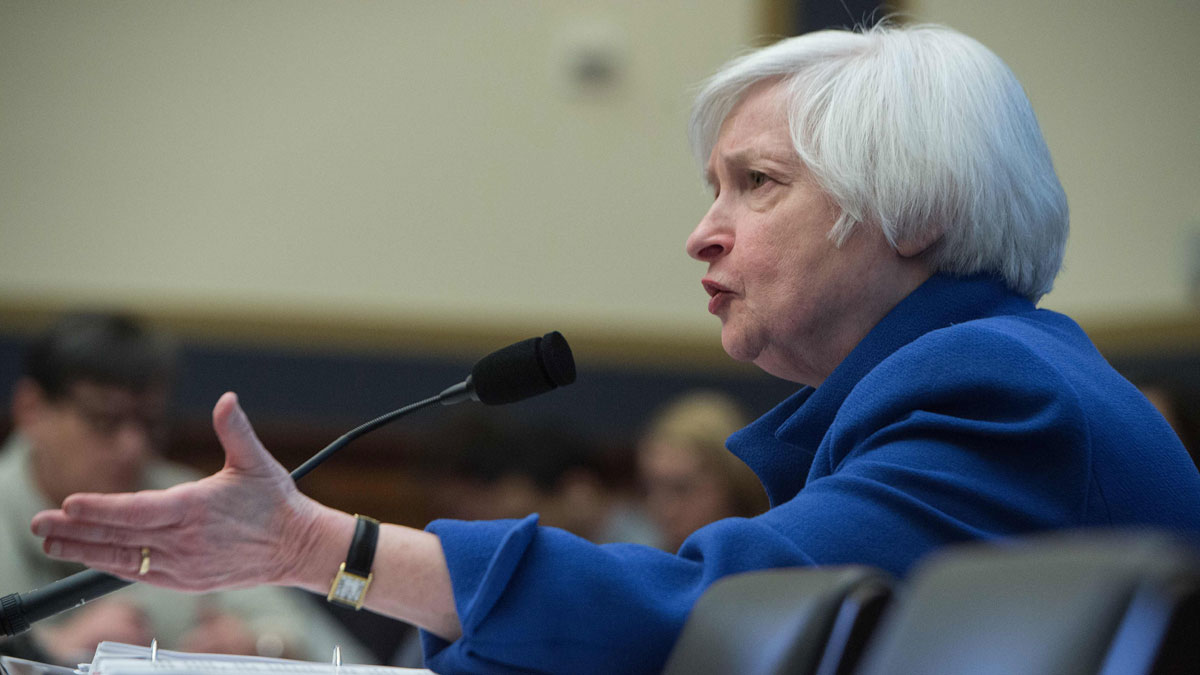
Gold price resumes downward trend
23 November
With speculation mounting over a possible Federal Reserve interest rate rise over the next few weeks, the gold price has resumed its downward trend after a brief rally at the end of last week.
Having fallen as low as $1,062 an ounce during trading last Wednesday, gold rallied on Thursday and was at one point a few dollars above $1,080. But after a dip back to below this level on Friday, the precious metal dropped again to below $1,070 in Asia overnight, where it remains rooted this morning.
The Week
Escape your echo chamber. Get the facts behind the news, plus analysis from multiple perspectives.

Sign up for The Week's Free Newsletters
From our morning news briefing to a weekly Good News Newsletter, get the best of The Week delivered directly to your inbox.
From our morning news briefing to a weekly Good News Newsletter, get the best of The Week delivered directly to your inbox.
Gold has fallen for 13 consecutive trading days out of 16 in Asia, while for each of the last five weeks in both London and New York it has closed lower than it started. The precious metal's short-lived recovery last week now appears to be little more than a relief rally in a bear market.
The latest fall follows comments on Saturday from San Francisco Federal Reserve chief John Williams, who the Wall Street Journal reckons is a good barometer of wider monetary policy opinion. Williams says that if nothing happens to derail current economic trends, "there's a strong case to be made in December to raise rates".
Rate rises hurt gold and other non-yielding commodities relative to income-generating assets. More importantly, Williams's statement has boosted the dollar – against which gold is typically held as a hedge – to a seven-month high.
Where is the gold price likely to go from here? OCBC Bank analyst Barnabas Gan has told Reuters that the current price – in fact any price around $1,080 – indicates that investors are "sitting on the fence as they await the [Fed] meeting in December". As a result, he believes the downward trend in the price of gold is likely to persist over the next couple of weeks.
A free daily email with the biggest news stories of the day – and the best features from TheWeek.com
Almost all traders appear to be united in their view that the gold price will fall further if the Fed does decide to raise rates in the forthcoming weeks. Even Jason Hamlin, a self-designated “gold stock bull” who reckons that gold is currently "oversold", writes on Seeking Alpha, the financial website, that the recent price drop is a sign that the metal "will test $1,000 in the near future".
Hamlin says that if support for gold holds up in the event that the Fed decides to keep rates as they are – or makes it clear that the rates rise is a "one and done" increase (i.e. a modest rise that will be the last for some time) – then it is not unthinkable that a rally could push gold towards a substantially higher price of $1,200 an ounce.
Gold price: why did it rise after latest rates hint?
19 November
The narrative has been clear for some time: gold, along with other non-yielding commodities, will suffer when the Fed raises interest rates. Or will it?
Yesterday the Federal Reserve published the minutes of its rate-setting committee meeting in October, which were broadly seen as emphasising that a rates rise is likely to take place in December. The gold price, surprisingly, rose.
It should be noted the rise was relatively minor – spot gold rose from around $1,064 an ounce before the announcement to $1,070. Gold was this morning trading at around $1,073 in London, a figure still close to its five-year lows and below the closing price before the brief 'safe haven' rally in the wake of last Friday's terror attacks in Paris.
But why did gold buck the downward trend? In part it was simply a function of a slight fall in the US dollar against which gold is often held as a hedge, Reuters notes. The greenback has been soaring of late and remains near multiyear highs, so a slight easing at some point was inevitable.
Perhaps the timing of the dollar dip was significant, however. The October commentary from the Fed and the subsequent barnstorming US jobs report together make a strong case for a rates rise. Yesterday's minutes appear more nuanced than that and contain some of the usual caution from dovish members. As a result, investor bets on a December rate rise actually fell slightly.
What next?
This could all suggest that a rates rise is now 'priced in' – and that therefore there is a good chance the gold price may have found a bottom whatever happens next month.
A decision to leave rates unchanged would be good for gold in that "having allowed markets to take firm hold of the belief that it would [raise] the Fed would lose all credibility", Peter Schiff of Euro Pacific Capital writes on CNBC. "Investors would rightly conclude that the Fed was bluffing all along, and that we are stuck at zero for the foreseeable future. This would surely ignite a gold rally for the ages."
But Schiff adds that even a rise may not precipitate a longer-term fall, as " investors have been expecting a rate hike for quite some time" and have been "factoring in substantially more than 25 basis points" worth of increase. "In fact, we are likely to get language that suggests a 'one and done' reality… this could cause a 'buy the rumour sell the fact reaction' that sends gold up rather than down."
Of course, it is just as likely that the minutes told us nothing we did not already know. The hard reality of a rates increase – if indeed it comes – will still be a hurdle for the gold price. For that reason, more analysts than not are expecting it to fall back towards $1,000 if this happens.
Whether gold stays there for long, though, is another matter.
Gold price near six-year low – and outlook remains weak
18 November
The gold price dropped even further yesterday, tumbling to a near six-year low of $1,064 an ounce in Asian trading overnight, as a shift back into risk assets following the Paris attacks continued the yellow metal's downward slide.
US inflation data, which showed consumer prices returning to growth and rising by 0.2 per cent in the year to October, is another factor in gold's latest slump. The official figures were above analyst expectations, adding further weight to the argument that the Federal Reserve may decide to raise interest rates at its final meeting next month.
A rates rise is likely to hurt non-yielding commodities such as gold and to boost the dollar against which the metal is typically negatively correlated.
Gold was trading slightly higher this morning at $1,072 an ounce, although this figure is still below the five-year low it reached last Thursday. Minutes of the last Federal Reserve meeting due this afternoon may offer more clues on the near-term trend, but any repeat of the more hawkish tone detected in the Fed's October decision to leave rates unchanged will put further pressure on the price of gold.
Traders, meanwhile, see little chance of anything in the minutes, or elsewhere, providing support for a significant upward movement. In fact, a poll of investment bankers by the Wall Street Journal suggested the eventual increase in interest rates – whether it comes in December or next year – would hold gold at a lower price throughout next year.
Gold has averaged $1,156 so far this year and the ten bankers surveyed reckon it will average $1,114 next year. Given that they also expect a recovery in the final months of the year when further rate rises will have been thoroughly priced in, this could spark an initial 2016 move towards – or even below – $1,000 an ounce.
Gold price falls back as markets recover poise after Paris
17 November
Terrorist tragedies tend to rattle financial markets so it was no surprise that the markets opened lower yesterday in the wake of Friday's atrocities in Paris, with investors reacting to events by seeking safe havens to protect them from any fallout.
Gold, which is widely seen as a safe store of value in times of trouble, inevitably benefitted from this. BullionVault reports that the mid-morning London benchmarking auction saw the highest demand for gold since August, while Reuters notes that in the first ten minutes of trading in New York yesterday some 3,000 lots changed hands, ten times the average level over the past two months.
Having risen to $1,084 an ounce in the immediate aftermath of news of the attacks in the French capital, gold rose to $1,098 in the Asian trading session yesterday. The price remained at around $1,090 an ounce through much of the day, well above the $1,073 floor it hit last Thursday.
But markets have recovered their equanimity following the swift response from the French government in the form of a spate of police raids and a promise to invest in defence. European equities closed yesterday mostly marginally back in the black – and are rallying strongly this morning. Gold is now heading lower.
The precious metal fell further in Asia overnight to below $1,084 an ounce and is now languishing at $1,080 this morning. If the risk-on move gathers pace it is possible that the five-year lows of late last week might return, with possible target prices of around $1,050 having previously been mooted.
Meanwhile speculation is mounting that there might be a US Federal Reserve rates increase this month for the first time in nearly a decade. A rise is likely to hurt gold relative to income yielding assets and the US dollar against which the precious metal is typically held as a hedge.
Gold price rises after Paris attack – but will rally last?
16 November
The gold price rose in afternoon trading in the US on Friday – and again in Asia overnight – as investors rushed to safe havens in the wake of the Paris terror attacks.
As markets digested the impact of the tragedy on the economy and tourism-related stocks in particular fell sharply, equity indices receded.
In contrast gold, which is traditionally used as a sanctuary in times of heightened risk, has rebounded from the near-six-year lows reached last week.
Having fallen as far as $1,073 an ounce at one point on Thursday, according to Investing.com, the gold price rallied to $1,091 in New York in late afternoon trading on Friday as news of the Paris atrocity broke.
In Asia overnight, in its first trading session since the scale of the attack has become clear, it at one point touched as high as $1,098 an ounce.
Whether gold will sustain these highs is questionable, however. It is quite likely that volatility will persist for a short time, but equities will most likely recover their poise before too long as the underlying fundamentals that have supported a prolonged risk rally come back into focus.
Then there is the continuing sense that a US interest rates rise is looming in December. Despite some underwhelming US retail sales data on Friday, this still remains a majority chance in the eyes of market investors – and it will hurt gold relative to income-generating assets, where returns will be significantly enhanced.
Gold has already softened and steadied back around $1,091 an ounce in Europe. This higher level could well persist in the coming days but will likely slip if economic data continues to support the case for a rates hike as we head towards next month's Fed meeting.
Gold price hits five-year low on 'Fed rollercoaster'
13 November
The gold price is currently on a "Fed rollercoaster ride", says the Financial Times, and is set to plunge to new depths after hitting a fresh five-year low yesterday.
During Thursday's session in London, the precious metal fell as low as $1,074 an ounce. This is below the five-and-a-half year intra-day low of $1,077 in July, while the eventual settlement of $1,081 was the lowest closing price over the same period. Gold has recovered slightly to $1,084 this morning, but trading remains extremely volatile.
The cause of the febrile sentiment is rising speculation that the Federal Reserve may finally vote to increase interest rates for the first time in nearly a decade in December. Chair Janet Yellen had raised the prospect of a rise next month last week – and then successive reports attesting to a booming jobs market made the case to hike stronger still.
On Thursday a number of speeches by Fed officials gave the impression that more voting members of the rate-setting Open Markets Committee are moving towards backing a rise.
One senior member who has been a noted 'dove' (arguing against action) in the past, New York Federal Reserve President William Dudley, told an audience in New York "it is quite possible that the conditions the committee has established to begin to normalize monetary policy could soon be satisfied." CNN Money says this translates to: "as long as the economy stays on course, the Fed is preparing to raise".
A rates rise will hurt gold, as it will boost returns from income-generating assets relative to the non-yielding yellow metal. Traders are clearly worried: on the Comex exchange in the US $500m of gold changed hands in one minute, while financial investors have reduce their holdings in gold funds to the lowest level since the collapse of Lehman Brothers in September 2008.
"We believe that gold is likely to remain under pressure until the Fed actually makes a move," Seamus Donoghue, chief executive at Allocated Bullion Solutions in Singapore, told the FT.
Gold price: why surging physical demand isn't halting the slide
12 November
The slide in the gold price continued yesterday in New York when it hit a five-year low settlement of $1,084.90 an ounce.
A sharp drop in the price had already occurred on Friday last week when a stellar US jobs report prompted a wave of speculation that the Federal Reserve might increase interest rates from their record lows next month. Rates rises generally hurt non-yielding gold, which would also be negatively affected by a bounce in the dollar.
Ironically, however, the slump is happening at a time when demand for physical gold is surging in China, one of the biggest global markets for the precious metal. According to the Daily Telegraph, World Gold Council data showed a 33 per cent jump in demand for gold bars and coins in the third quarter of this year to 295.7 tonnes, "led by a 70 per cent year-on-year increase in Chinese investment".
This rise in demand is taking place in spite of the current strength of the US dollar and the ongoing weakening of the yuan, which together would have the effect of making gold more expensive for Chinese buyers in real terms despite the sliding price. As Wolfgang Wrzesniok-Rossbach told CNBC earlier this month, for many Chinese "an investment in gold is also an investment against the depreciation of [their own] currency".
So why is strong physical demand for gold failing to translate into higher prices? Experts say the futures market that determines the price is locked in a "bear market" cycle, which is being driven in this latest phase by the interest rates debate. Gold also remains at a high relative value compared to other commodities, which have fallen further in the face of a slowing global economy, suggesting a harder 'correction' is due.
Dominic Frisby writes in Money Week that the historic indicators point to a strong area of support for the precious metal of around $1,000 to $1,050, a ballpark figure he expects to be reached by the end of the year. Should this key barrier be breached in the event of a rates rise, "the $850 area comes into play".
Once gold has hit the bottom the strong underlying demand for it could spark a rally in fairly quick succession. But Frisby – and others – believe this is still a long way off.
Gold recovers but remains on track for historic losses
10 November
The gold price ended on a positive note for the first time in eight sessions yesterday but gloom continues to hang over the troubled industry.
Gold for December delivery on the Comex division of the New York Mercantile Exchange crept up by 40 cents to close at $1,088.10 per ounce. Trade ranged from $1,087.40 to $1,094.90.
Trading remains tame as investors await clearer signs on US monetary policy, according to the Bullion Desk. Recent data suggests that the US economy is improving, but the long-term picture remains cloudy.
Boris Mikanikrezai, an analyst at FastMarkets, said: "We believe that the sharp weakening in gold prices was the result of growing Fed tightening expectations. While we remain bearish toward the metal in the near term, we do not rule out short-term brief rallies, triggered by disappointing US data releases."
Although the small increase in prices yesterday was welcomed, the precious metal remains on track for its third-straight year of losses, says Mining.com. The last time gold dropped in value for three consecutive years was between 1996 and 1998. This time, industry commentators warn that prices may fall even further.
Gina Sanchez of Chantico Global told CNBC that gold "hates" a recovering economy, higher interest rates and a stronger dollar. "Those are all three things we can expect," she said.
Prices hit a three-month low on Friday, prompting analysts to predict further losses.
Gold price hits three-month low – and could fall even further
9 November
The gold price tumbled on Friday, conforming to type in the face of a surge in expectations of an increase in interest rates by the Federal Reserve.
The latest non-farm payroll numbers on Friday show that the US economy gained 271,000 jobs in October, well ahead of both the 182,000 jobs expected by analysts and the 200,000 benchmark for healthy labour market growth. In an unexpectedly strong showing, the Wall Street Journal reports that the unemployment rate in the US fell to five per cent, while wages rose by 2.5 per cent on an annual basis, the best figure since 2009.
With Fed officials already talking up the possibility of a December rates rise, as well as focusing their attention on jobs and growth at home, the report is seen as a sign that an increase is a likely prospect. Investors initially predicted a 50:50 chance of rates being raised next month but they are now putting the chances at 70 per cent.
Rates rises boost income-generating assets but hit non-yielding commodities like gold. The precious metal also suffers when the dollar rises, as this increases the cost of buying for overseas investors.
The gold price fell from $1,107 an ounce on Friday morning to $1,084 at one point, before consolidating slightly and ending the New York session at around $1,087. Last week, it dropped by five per cent overall, its worst performance in two months, and it is now only slightly above its lowest closing price in five years of $1,084 in August.
Analysts reckon that the only way from here is lower in the near term. The think tank Capital Economics told the Financial Times that gold could drop to $1,050, "consistent with a two-year US Treasury yield of 1 per cent". If rates do increase next month, expectations are for the metal to move towards $1,000 or less.
Where gold goes from here is far from clear. Some analysts reckon it could plunge even lower – perhaps down to $800. Others reckon that once rates begin to normalise, the focal point could switch to the high physical demand for gold and low stockpiles, in which case the price could begin to recover.
If a rates rise fails to materialise next month in spite of current forecasts, we can expect a short-term bounce back of above $1,100 an ounce.
Gold price could head back to five-year low
6 November
The gold price could be set to return to the five-year lows of this summer, as markets await a US jobs report later this afternoon that will give further clues on whether the Federal Reserve will increase interest rates next month.
Last week, the US central bank published its latest decision to hold rates following a vote at its October meeting, but struck a more hawkish tone by failing to allude to the risks to the global economy and talking up the possibility of domestic demand and employment growth. Gold, which tends to fall as rates rise because it becomes less attractive relative to income-generating assets, fell sharply as a result.
This week, the Federal Reserve chairwoman Janet Yellen gave an even stronger hint that rates could rise next month, telling a congressional committee that domestic signs were positive and explicitly stating an increase next month was "in play". After six straight losing sessions, gold plummeted to $1,107 an ounce on Wednesday, six per cent below where it had been before the rates announcement.
The gold price hit a low of $1,085 in August. The Fed has said it is watching jobs data closely to determine its December decision, making a non-farms payroll report due this afternoon critical. If this proves to be positive, as the market expects, gold is likely to fall sharply again and could re-test this low. The price is currently steady at below $1,108.
As Mining.com notes, adding to the chances of a "dramatic" reaction from gold is the fact that hedge funds and other institutional investors have built up big 'long positions' – meaning bets that the gold price will rise – in recent weeks. This means a sell-off could be sharp and its effect on prices severe.
Expectations are for the data today to show the US added 179,000 jobs last month, up from 142,000 in September, and for the unemployment rate to be unchanged at 5.1 percent. If this forecast is beaten – or even just met – then gold is likely to fall. If the data comes in low this could prompt a rise, but the feeling is the miss would have to be wide.
Tom Kendall at ICBC Standard Bank told the Bullion Desk that upward revisions "could open a trap door at $1,100 for gold". He said a "data disappointment would have to be sizeable to get the metal back over $1,135 in the short term.
-
 Trump tightens restrictions for work visas
Trump tightens restrictions for work visasSpeed Read The length of work permits for asylum seekers and refugees has been shortened from five years to 18 months
-
 Stopping GLP-1s raises complicated questions for pregnancy
Stopping GLP-1s raises complicated questions for pregnancyThe Explainer Stopping the medication could be risky during pregnancy, but there is more to the story to be uncovered
-
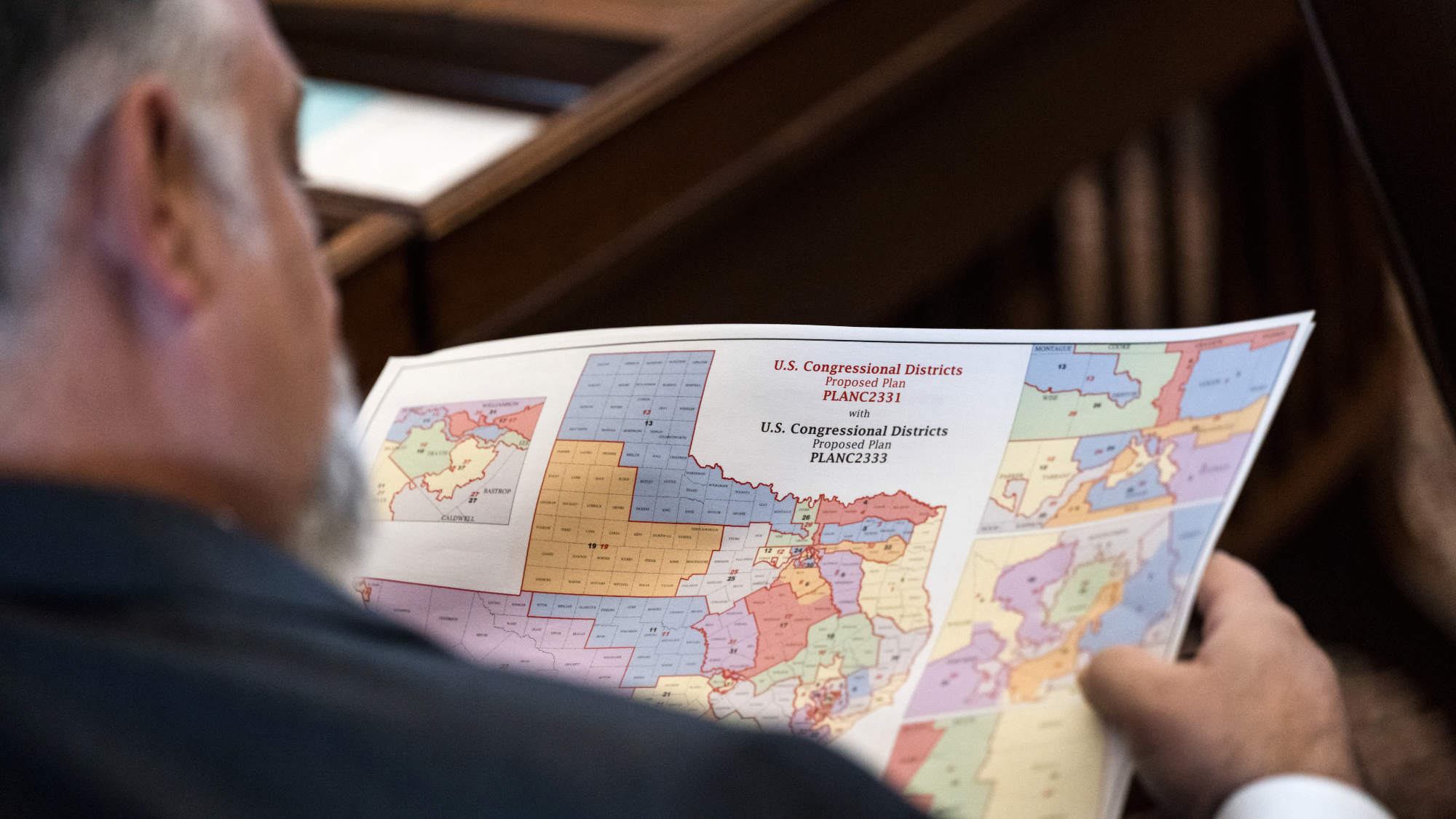 Supreme Court revives Texas GOP gerrymander
Supreme Court revives Texas GOP gerrymanderSpeed Read Texas Republicans can use the congressional map they approved in August at President Donald Trump’s behest
-
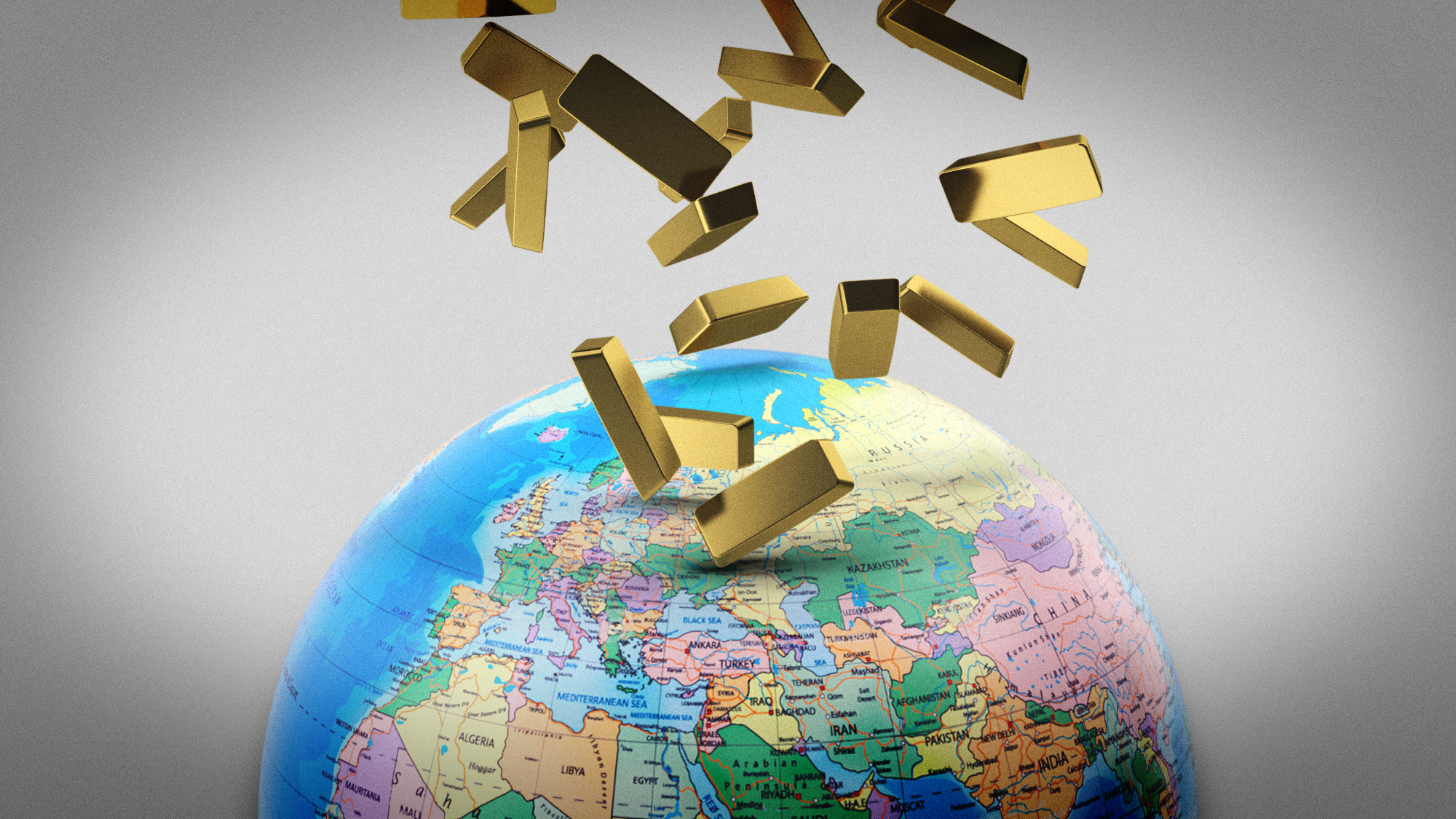 What a rising gold price says about the global economy
What a rising gold price says about the global economyThe Explainer Institutions, central banks and speculators drive record surge amid ‘loss of trust’ in bond markets and US dollar
-
 Gold tops $4K per ounce, signaling financial unease
Gold tops $4K per ounce, signaling financial uneaseSpeed Read Investors are worried about President Donald Trump’s trade war
-
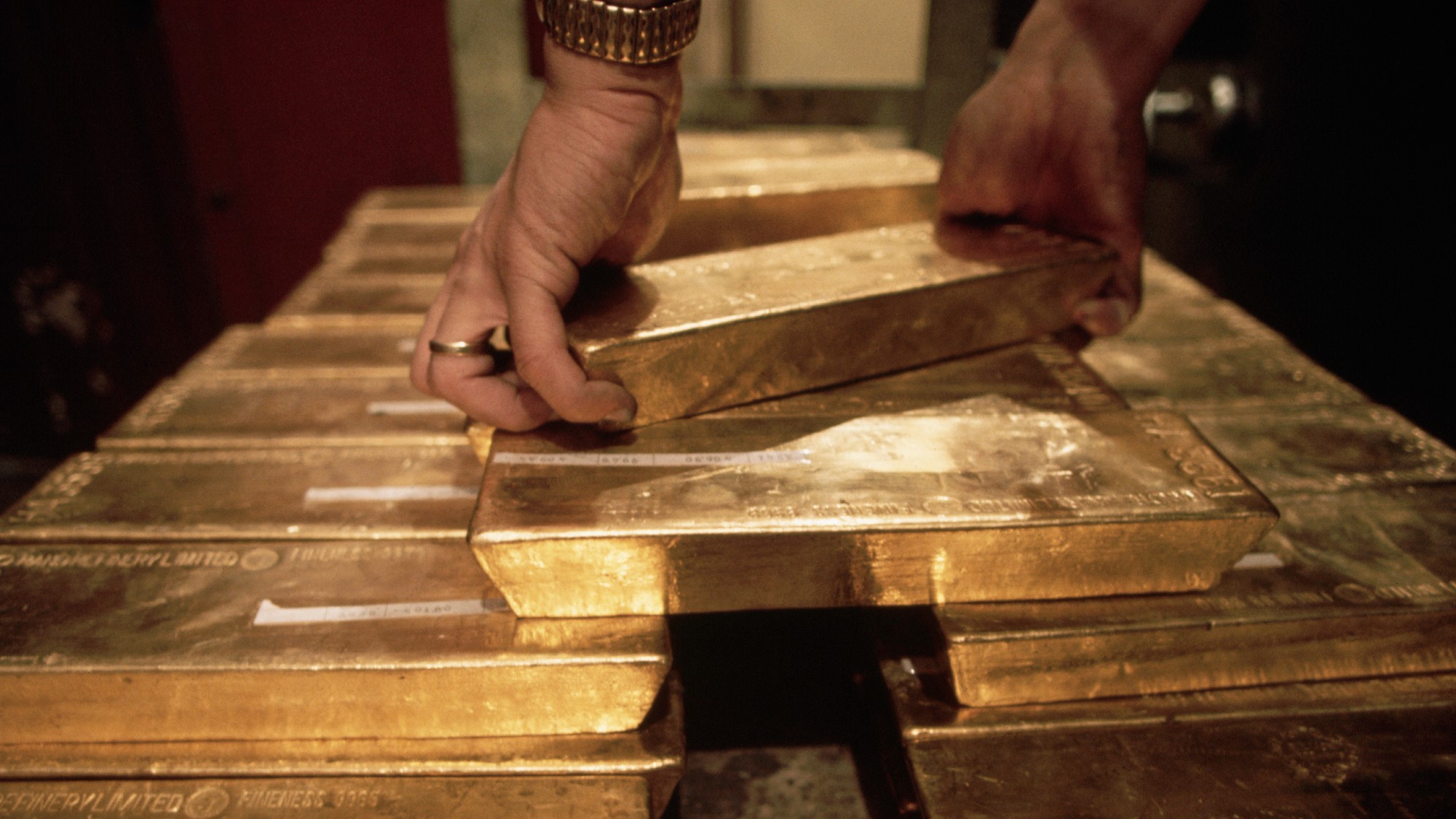 Safe harbor: Gold rises as stocks sink
Safe harbor: Gold rises as stocks sinkfeature It's a golden age for goldbugs
-
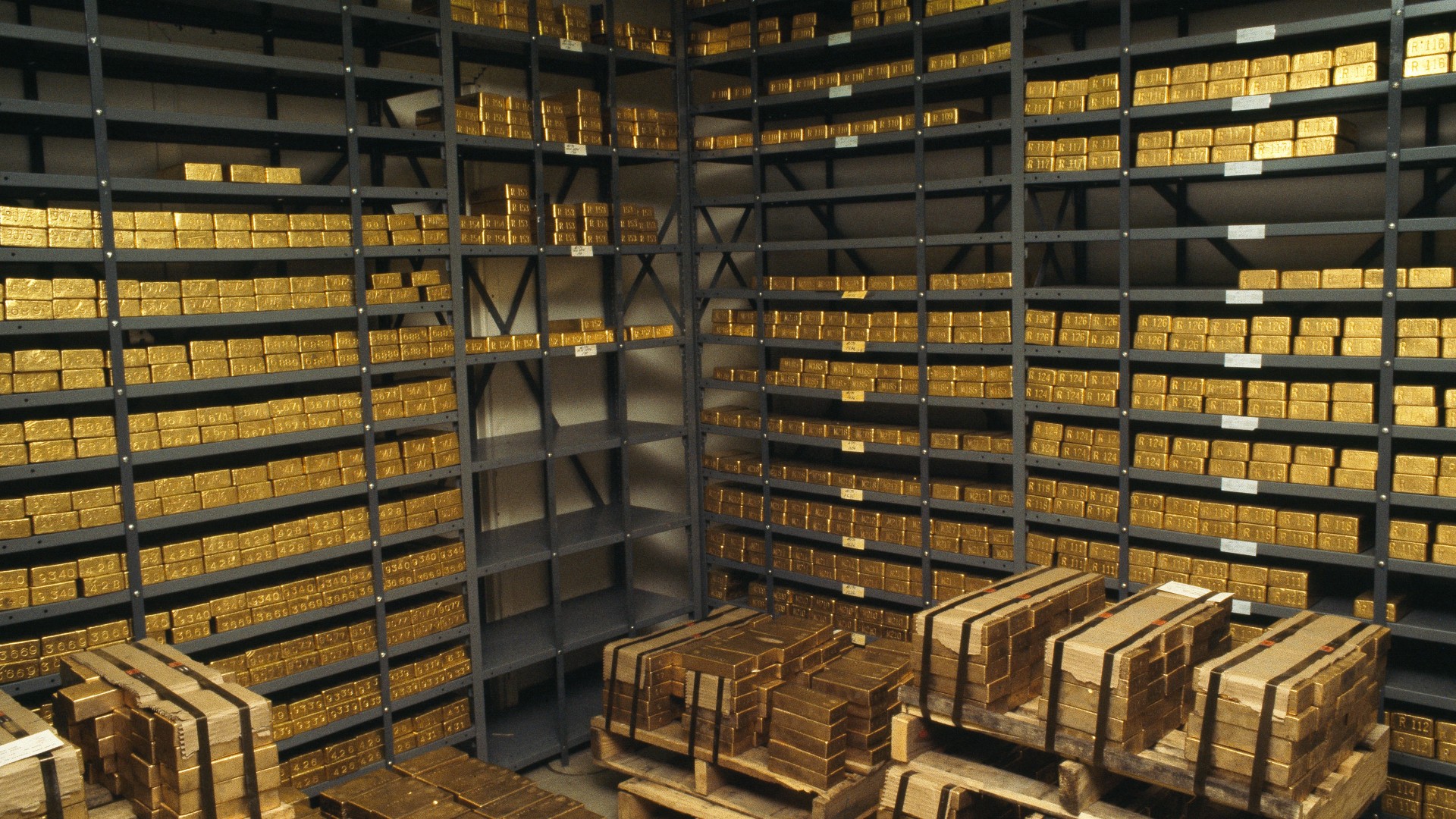 What rising gold prices can tell us about the economy in 2024
What rising gold prices can tell us about the economy in 2024The Explainer Market hits all-time high, boosted by a weakening US dollar and rising global tensions
-
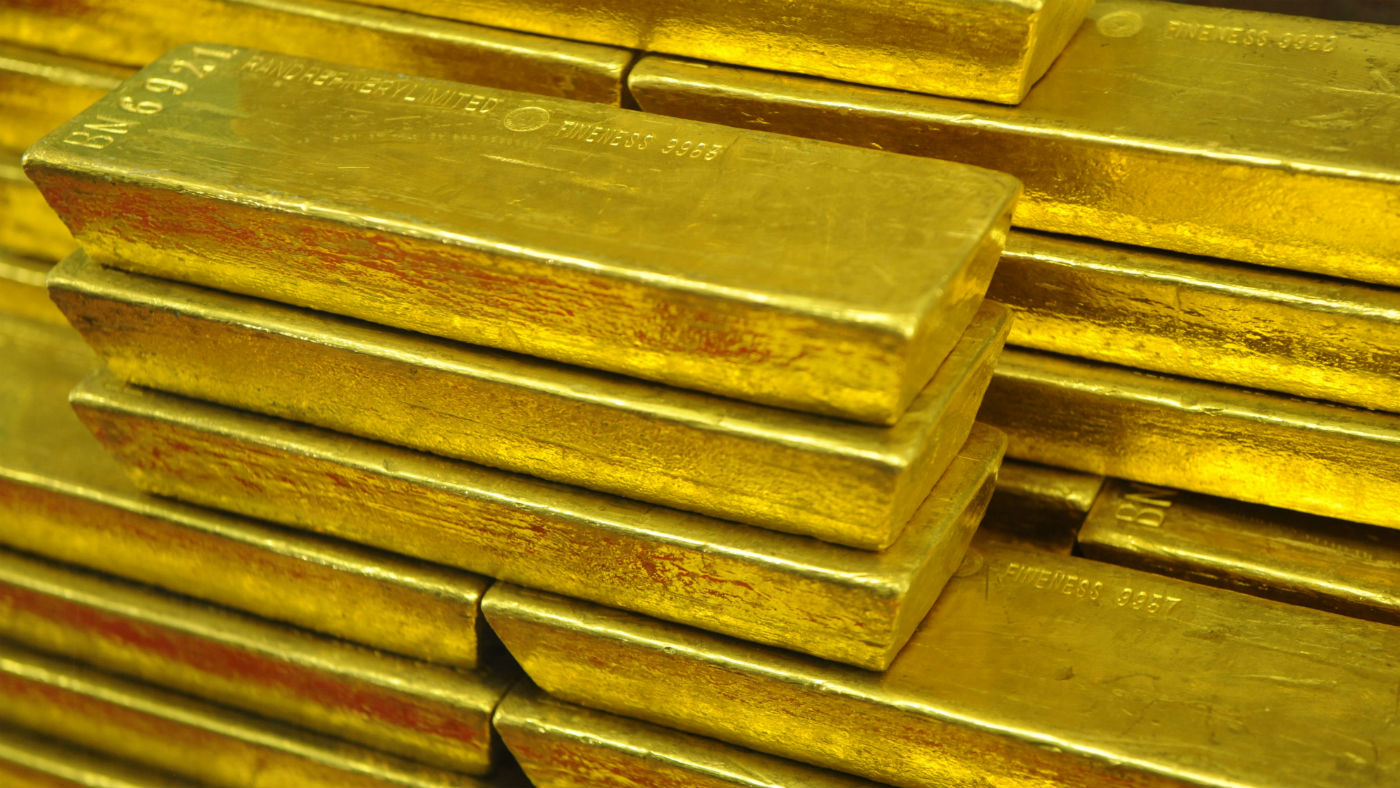 Gold’s ‘flash crash’: what the experts think
Gold’s ‘flash crash’: what the experts thinkfeature Bad news, good news and a loss of faith
-
 What is the price of gold and when is best to buy?
What is the price of gold and when is best to buy?Speed Read Economic and geopolitical uncertainty traditionally drives investors to reliable metal markets